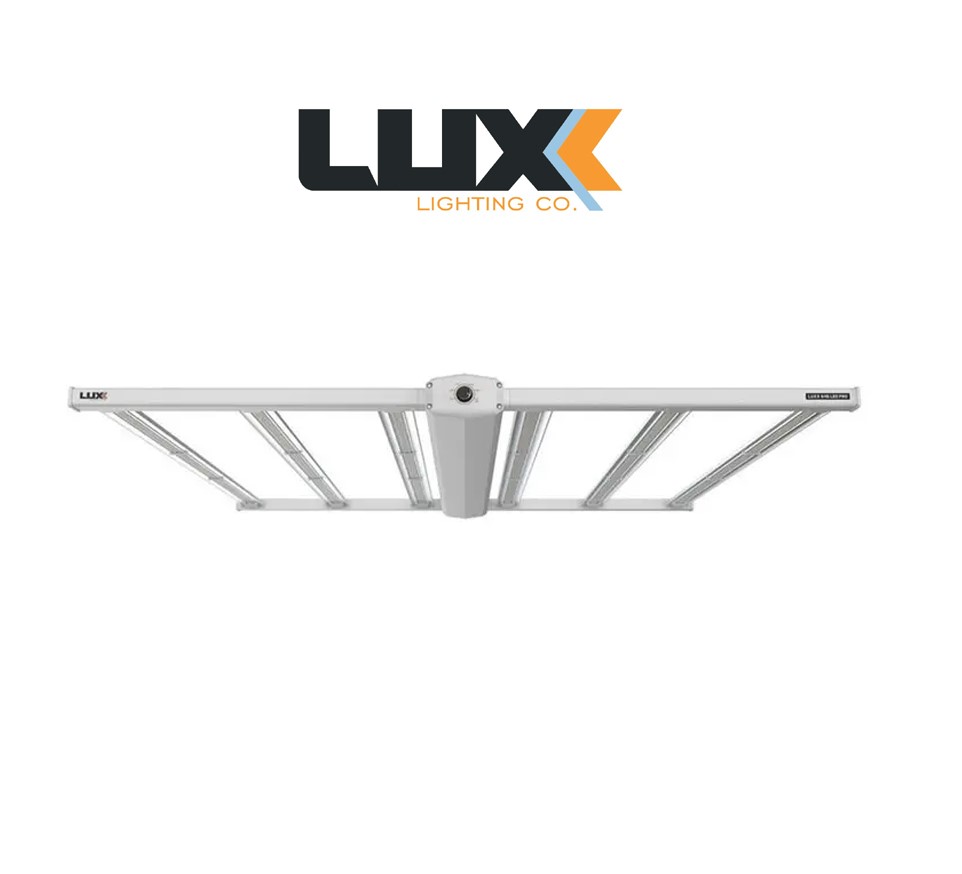Luxx Lighting
Company update:
In a recent announcement made on their official website, Luxx, a well-known brand in the lighting and cultivation industry, has revealed that it will be discontinuing its operations as of December 31, 2022. This decision has been prompted by the challenging market conditions that the company has faced in recent times.
Over the coming months, their focus will shift towards embracing sustainable LED technology, which is at the forefront of the cannabis industry’s future. As part of this strategic shift, they will discontinue the sale of high-intensity discharge (HID) and high-pressure sodium (HPS) lights, which are outdated technologies that have become commonplace in the industry and are less energy-efficient compared to LEDs. This transition will be implemented gradually and is anticipated to be finalized by the end of this calendar year.
There is a growing emphasis on addressing environmental sustainability in cannabis cultivation. As industry leaders, they recognize their responsibility to champion innovation and technology that can foster a more sustainable cannabis sector. Moreover, they are dedicated to facilitating energy savings and efficiency improvements for growers in cost-effective ways. One such area of innovation is their Gavita CT1930e LED, which not only produces five percent more light output than traditional HID lights but also consumes 20 percent less energy.
The shift towards using LED lights for plant cultivation is not merely a trend but a scientifically-backed choice that offers a multitude of advantages over traditional lighting methods such as High-Intensity Discharge (HID) and fluorescent lights. Let’s delve into why LED lights have become the go-to choice for growers seeking healthy, efficient, and sustainable crop cultivation.
1. Energy Efficiency
One of the primary reasons growers opt for LED lights is their remarkable energy efficiency. Unlike traditional lighting systems, LED lights convert a higher percentage of energy into usable light, minimizing wasted energy in the form of heat. This efficiency translates into significantly reduced electricity bills, making LED lighting a cost-effective long-term investment.
2. Precision Spectrum Control
LED lights allow growers to tailor the light spectrum to suit specific plant needs. Different stages of plant growth require varying wavelengths of light. With LED technology, growers can adjust the spectrum to emphasize blue light for vegetative growth and red light for flowering and fruiting, thus maximizing crop yield and quality.
3. Reduced Heat Emission
Traditional HID lights emit a substantial amount of heat, which can be detrimental to plants when placed too close. LED lights, on the other hand, generate minimal heat, allowing them to be placed closer to plants without the risk of heat damage. This proximity improves light absorption and further enhances plant growth.
4. Longer Lifespan
LED lights have an impressive lifespan, often exceeding 50,000 hours of operation. This longevity reduces the frequency of replacements, saving both time and money in the long run compared to traditional bulbs that require frequent changing.
5. Environmental Sustainability
LED lights are environmentally friendly due to their lower energy consumption and reduced heat emission. They contribute to a smaller carbon footprint and are free from hazardous materials, such as the mercury found in fluorescent bulbs.
6. Customizable Light Intensity
LED technology allows for precise control over light intensity. Growers can adjust the brightness of LED fixtures to meet the specific needs of different plant species, ensuring optimal growth conditions.
7. Uniform Light Distribution
LEDs provide even light distribution across the canopy, ensuring that all parts of the plant receive adequate illumination. This consistency results in uniform growth and a higher yield.
8. Durability
LED lights are solid-state lighting devices, making them highly durable and resistant to shocks and vibrations, a crucial factor in commercial cultivation settings.
Conclusion:
In summary, integrating LED lighting into cannabis growth practices presents many advantages, solidifying its essential role in contemporary cultivation. With their energy-efficient operation, precise spectral control, minimized heat output, extended lifespan, and eco-friendly attributes, LED lights have emerged as the top option for growers, whether they operate on a small or large scale.
Embracing LED technology not only aligns with sustainability goals but also promises substantial long-term cost savings. As the agricultural sector undergoes transformation, the widespread adoption of LEDs marks a pivotal stride towards sustainable, efficient, and economically viable crop cultivation practices.
Important notice: Luxx products will still be available at retail locations while supplies last. They will continue to provide product and warranty support. Please contact them at (888) 509-1088.


